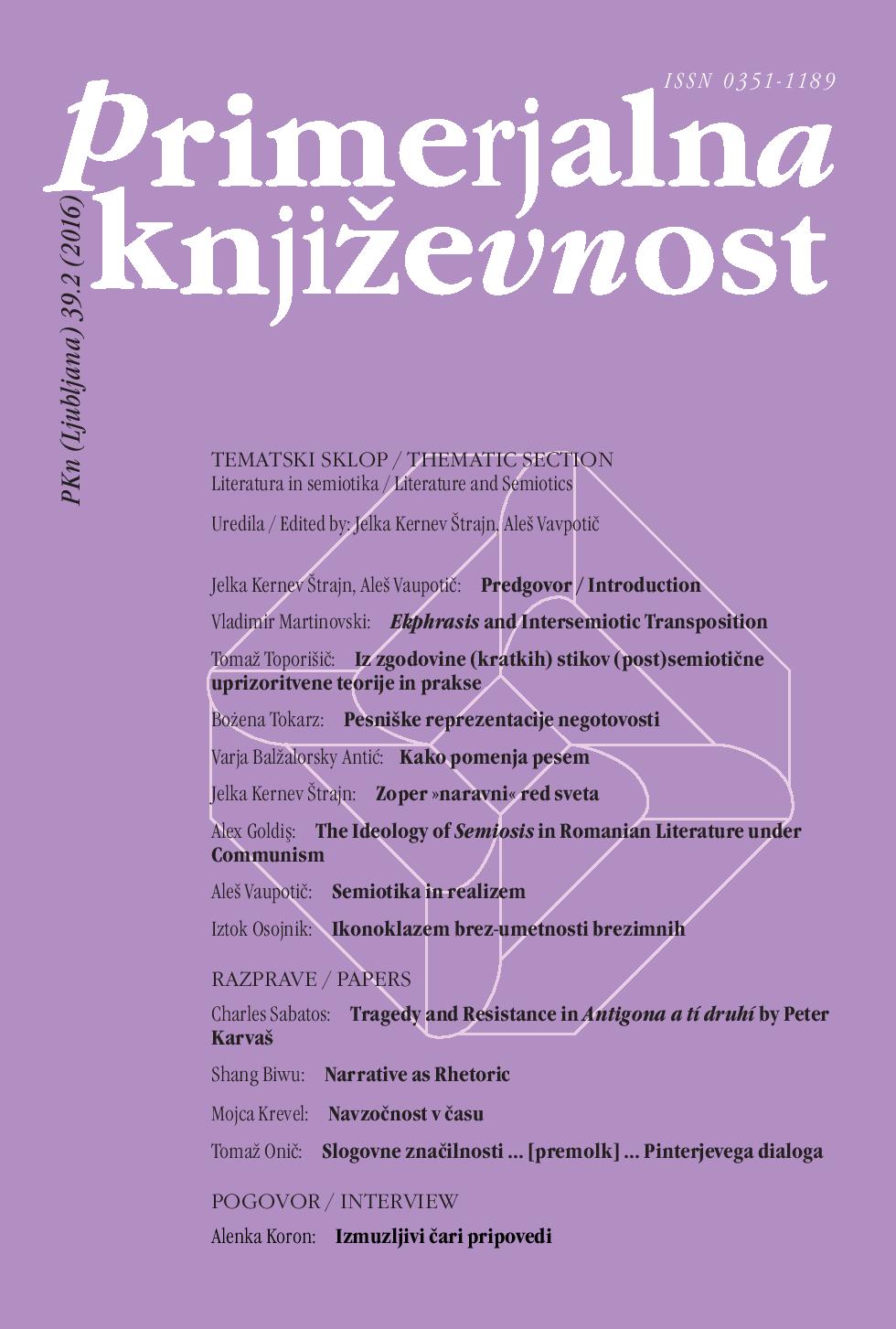The Iconoclastic Anonymity of Freedom-from-Art: Unconsciousness and Mystery
Keywords:
art and society, capitalism, neoliberalism, cultural industry, iconoclasm, non-market art, creativity, anonymity, post-ethicsAbstract
For the first time in history, the users of images have become the producers of images, within an unrestrained circular process, wherein images yield new insights, and insights demand their instantaneous pictorial foundation. This article reaches beyond “art” itself and questions the very foundation of the notion of art as an exclusive social and political neoliberal phenomenon, the institution or monopoly topography of the artistic signifier itself as a profit-oriented commodity. “Post-auratic arts of new media as the new technologies of reproduction mark the end of traditional art as well as the end of aesthetic art,” claims Danko Grlić, a Croatian philosopher of art. – Therefore one should consider modern art as an event in the space and location of Derrida’s “trace”, referring to the deconstruction of traditional metaphysical meaning and establishment of the signifier without any significant. After the avant-garde, neo-avant-garde, and post-avant-garde movements, the last retreat of contemporary artlessness as a radical empty signifier, the mystery of being (Seyn) as an iconoclastic event (Ereignis), would be bare subversiveness as such, the cancellation of the Derrida’s empty “location/trace” in Heidegger’s anonymous abyss of being (Sein) without privileges. – The subversiveness of subversiveness itself, the end of (the autonomous field of) art as a profit-oriented market commodity, could be the ultimate iconoclasm or subversiveness. This article presents such an anonymous subversive (or iconoclastic) “artless” movement that operated in the 1970s. The sub-realistic movement in Slovenia was an invisible and never truly recognized foundation of a number of later art movements (NSK, Ana Monroe Theater, etc.) that suppressed the awareness of their origin, both intentionally and unknowingly. Thus, the radical, socially and politically “unconscious” contemporary phenomena of artlessness are not works represented at consecrated art exhibitions, such as Documenta in Kassel or the Venice Biennale, where curators took over the position of editors and managers-in-chief of arts as the authorized agents of global neoliberalism and where artists themselves are granted only the position of flexible precarian artisans. It is exactly those localities of represented “subversiveness” that are counter-subversive and “monopolistic” as such. Post-academic criticism should be aware of the existential dimension of the problem and should re-elaborate the basic historic understanding of art not as techne but as poiesis.References
Bahovec, Eva. »Razlika in naključje: Freud, Beauvoir, Althusser«. Uganka, skrivnost, čudež ali naključje. Ljubljana: Društvo za kulturološke raziskave, 2014. 19–37.
Badiou, Alain. Etika: razprava o zavesti o Zlu. Ljubljana: Društvo za teoretsko psihoanalizo, 1996.
Borovičkić, Marija. »Uvod«. Vizualni studiji danas: moć slika. Zagreb: Tekstilno-tehnološki fakultet, 2013. 5–6. https://issuu.com/modernavremena/docs/vizualni_studiji_danas.
Bloom, Harold. The Western Canon. The Books and School of the Ages. London: Papermac, 1995.
Brassier, Ray. »The Pure and Empty Form of Death: Deleuze and Heidegger«. A/V 2 (2006). Splet. 17. 6. 2016. http://www.actualvirtualjournal.com/2014/11/the-pure-and-empty-form-of-death.html.
Bunta, Aleš. »Lyotard: filozofija in vprašanje legitimne vednosti«. Problemi 47.8 (2009): 113–147.
Detela, Jure. Mah in srebro. Maribor: Založba Obzorja, 1983.
– – –. Orfični dokumenti I, II. Teksti in dokumenti iz zapuščine. Koper: Hyperion, 2011.
Gadamer, Hans-Georg. Kdo sem jaz in kdo si ti. Ljubljana: KUD Apokalipsa, 2016.
Gladding, Jody. Translation from Bark Beetle. Mineapolis: Milkweed, 2014.
Harvey, David. »The Art of Rent: Globalization, Monopoly, and the Commodification of Culture«. A World of Contradictions. Ur. Leo Panich in Colin Leys. Socialist Register 38 (2002): 93–110.
Heidegger, Martin. O umetnosti. Ljubljana: Apokalipsa, 2016.
Komel, Dean. »Od izvora umetniškega dela skozi brezumetniškost do porekla umetnosti«. Martin Heidegger. O umetnosti. 335–350.
Loomba, Ania. Kolonializem in neokolonianizem. Ljubljana: Orbis, 2009.
Mayer, Jane. »Covert Operations: The Billionaire Brothers Who Are Waging a War Against Obama«. The New Yorker (30. 8. 2010). Splet. 20. 6. 2016. http://www.newyorker.com/magazine/2010/08/30/covert-operations.
Mitchell, W. J. T. »Pokazati gledati: kritika vizualne kulture«. Tvrđa 1–2 (2006): 25–36.
– – –. »Umjetničko djelo u razdoblju biokibernedtičke reprodukcije«. Tvrđa 1–2(2006): 37–48.
Osojnik, Iztok. »Dioniz se vrača«. Søren Kierkegaard: 5. mednarodni filozofski simpozij Miklavža Ocepka, Mengeš, Ljubljana, Škocjan, Trst, 11.–18. 6. 2015.
Paić, Žarko. Slika bez svijeta. Zagreb: Literis, 2006.
– – –. »Suvremena umjetnost i njena teorija: djelo, događaj, izvedba«. Vizualni studiji danas: moć slika. Zagreb: Tekstilno-tehnološki fakultet, 2013. 11–14.
– – –. Sloboda bez moći. Politika u mreži entropije. Zagreb: Udruga Bijeli val, 2013. 522–570.
Parmenid. Fragmenti. Maribor: Založba Obzorja, 1995.
Simoniti, Jure. Svet in njegov predikat 2. Preizkušanje meja izrekljivega. Ljubljana: Društvo za teoretsko psihoanalizo, 2014.
Sukman, Rachel. »The Encyclopedic Palace«. Terminal 50 (2013): 40–44.
Urbančič, Ivan. O krizi. Ljubljana: Slovenska matica, 2012.


